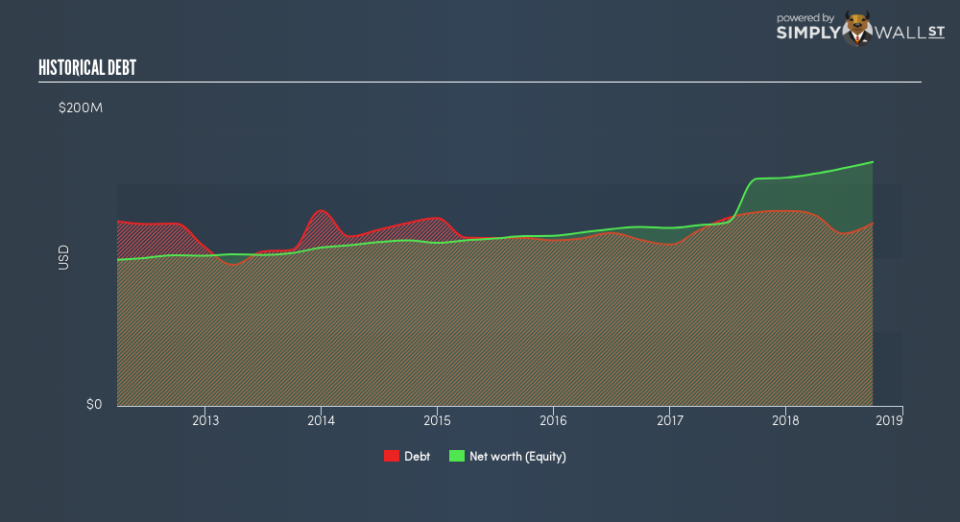Risk Factors To Consider Before Investing In ACNB Corporation (NASDAQ:ACNB)

The banking sector has been experiencing growth as a result of improving credit quality from post-GFC recovery. As a small-cap bank with a market capitalisation of US$274m, ACNB Corporation’s (NASDAQ:ACNB) profit and value are directly affected by economic growth. This is because borrowers’ demand for, and ability to repay, their loans depend on the stability of their salaries and interest rates. Risk associated with repayment is measured by bad debt which is written off as an expense, impacting ACNB’s bottom line. Since the level of risky assets held by the bank impacts the attractiveness of it as an investment, I will take you through three metrics that are insightful proxies for risk.
Check out our latest analysis for ACNB
Want to help shape the future of investing tools and platforms? Take the survey and be part of one of the most advanced studies of stock market investors to date.
How Good Is ACNB At Forecasting Its Risks?
ACNB’s ability to forecast and provision for its bad loans indicates it has a good understanding of the level of risk it is taking on. If the bank provisions for more than 100% of the bad debt it actually writes off, then it is considered to be relatively prudent and accurate in its bad debt provisioning. With a bad loan to bad debt ratio of 212.79%, the bank has extremely over-provisioned by 112.79% compared to the industry-average, which illustrates perhaps a too cautious approach to forecasting bad debt.
What Is An Appropriate Level Of Risk?
ACNB’s operations expose it to risky assets by lending to borrowers who may not be able to repay their loans. Loans that cannot be recuperated by the bank, also known as bad loans, should typically form less than 3% of its total loans. Loans are written off as expenses when they are not repaid, which comes directly out of ACNB’s profit. Since bad loans only make up a very insignificant 0.50% of its total assets, the bank exhibits very strict bad loan management and is exposed to a relatively insignificant level of risk in terms of default.
Is There Enough Safe Form Of Borrowing?


ACNB profits from lending out its various forms of borrowings and charging interest rates. Deposits from customers tend to carry the lowest risk due to the relatively stable interest rate and amount available. Generally, the higher level of deposits a bank retains, the less risky it is deemed to be. Since ACNB’s total deposit to total liabilities is very high at 91% which is well-above the prudent level of 50% for banks, ACNB may be too cautious with its level of deposits and has plenty of headroom to take on risker forms of liability.
Next Steps:
How will ACNB’s recent acquisition impact the business going forward? Should you be concerned about the future of ACNB and the sustainability of its financial health? The list below is my go-to checks for ACNB. I use Simply Wall St’s platform to keep informed about any changes in the company and market sentiment, and also use their data as the basis for my articles.
Future Outlook: What are well-informed industry analysts predicting for ACNB’s future growth? Take a look at our free research report of analyst consensus for ACNB’s outlook.
Valuation: What is ACNB worth today? Has the future growth potential already been factored into the price? The intrinsic value infographic in our free research report helps visualize whether ACNB is currently mispriced by the market.
Other High-Performing Stocks: Are there other stocks that provide better prospects with proven track records? Explore our free list of these great stocks here.
To help readers see past the short term volatility of the financial market, we aim to bring you a long-term focused research analysis purely driven by fundamental data. Note that our analysis does not factor in the latest price-sensitive company announcements.
The author is an independent contributor and at the time of publication had no position in the stocks mentioned. For errors that warrant correction please contact the editor at editorial-team@simplywallst.com.

